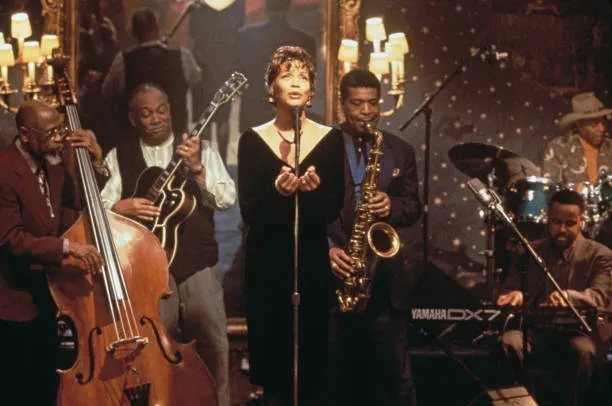Rod Stewart’s adaptation to the digital age stands as a testament to his ability to reinvent himself in an ever-evolving music landscape. Despite starting his career in the 1960s, long before the internet and streaming platforms revolutionized the music industry, Stewart has remained relevant, both musically and culturally, in the 21st century. His longevity is a result of his willingness to evolve with the times while staying true to the core elements of his artistry. As the music industry shifted from physical album sales to digital downloads and streaming services, Stewart navigated these changes with adaptability, ensuring his place in the modern musical canon.
Embracing the Streaming Platforms

In the digital age, streaming platforms such as Spotify, Apple Music, and YouTube have become the primary ways in which people discover and consume music. For legacy artists like Stewart, this shift posed a challenge, as it required not only embracing new ways of releasing and promoting music but also maintaining relevance with younger audiences.
Rod Stewart has adapted by ensuring his catalog is widely available on all major streaming platforms. His classic hits like "Maggie May," "Sailing," and "Da Ya Think I'm Sexy?" continue to attract millions of streams, reaching new generations of listeners. Platforms like Spotify have enabled his music to be part of curated playlists, introducing his timeless work to younger audiences who may not have grown up with his music. Stewart’s ability to leverage these platforms has kept his legacy alive in an era where algorithms and playlists dominate music discovery.
Collaborations and Genre Fluidity

One of the key ways in which Rod Stewart has reinvented himself in the streaming era is through strategic collaborations and an openness to experiment with different genres. For instance, Stewart has worked with contemporary artists and producers to create fresh takes on his music, ensuring his sound remains relevant in a changing musical landscape. His 2018 album, Blood Red Roses, showcased this reinvention, blending elements of pop, folk, and rock with modern production techniques that resonated with contemporary listeners.
Additionally, Stewart has embraced his role as a crossover artist, appealing to both longtime fans and younger audiences. His exploration of different genres, such as his foray into standards and jazz with The Great American Songbook series, positioned him as an artist with broad appeal. These albums achieved significant commercial success and earned him a new fanbase, many of whom may not have been drawn to his classic rock hits but were intrigued by his interpretations of timeless American songs.
Social Media Presence and Engaging Fans

In the digital era, an artist's online presence plays a crucial role in maintaining relevance, and Stewart has leveraged social media to his advantage. His active presence on platforms like Instagram, Twitter, and Facebook allows him to connect directly with fans, share behind-the-scenes glimpses of his life, and promote new projects. Through these platforms, Stewart engages with both longtime fans and younger followers who may have discovered his music through streaming services.
His social media strategy has also allowed him to remain visible in the public eye, particularly during tours and major releases. He regularly shares updates from his live performances, which continues to be a major part of his career, helping to cultivate a sense of connection and immediacy with his global fanbase. This ongoing dialogue with fans, facilitated by social media, has been critical in Stewart’s adaptation to the digital age, allowing him to stay relevant without relying solely on traditional media outlets.
Live Performances and Virtual Concerts

While live performances have always been central to Rod Stewart's career, the digital age has seen a shift toward virtual concerts and live-streamed events, particularly during the COVID-19 pandemic. Stewart, like many artists, adapted to these changes, exploring ways to continue performing for his fans even when traditional concerts were not possible. His virtual appearances and performances helped him remain engaged with his audience while navigating the restrictions on live events.
Furthermore, Stewart’s embrace of high-quality production in his live performances—whether in person or virtual—has kept him a sought-after artist in the streaming age. His concerts continue to draw large crowds and are often shared widely online, adding to his digital footprint. His ability to transition seamlessly between live and digital performances has further solidified his standing as an artist who can thrive in both the physical and digital spaces.
Legacy Preservation in the Digital Era

Stewart’s long career and extensive catalog have benefited from the ease with which fans can now access his music. Digital remastering and reissues of his classic albums, along with new material, have allowed him to remain culturally significant. His work is not only preserved but continually rediscovered by new listeners who find his music on streaming platforms or social media. Additionally, his involvement in documentaries, interviews, and other media helps to keep his legacy in the public eye.
Rod Stewart's adaptability in the streaming era is a key reason for his sustained success in the digital age. By embracing streaming platforms, collaborating with contemporary artists, maintaining an active social media presence, and transitioning to virtual performances, Stewart has managed to stay relevant while continuing to attract new fans. His willingness to evolve without losing his unique artistic identity has ensured that his music continues to thrive in an industry transformed by technology.



